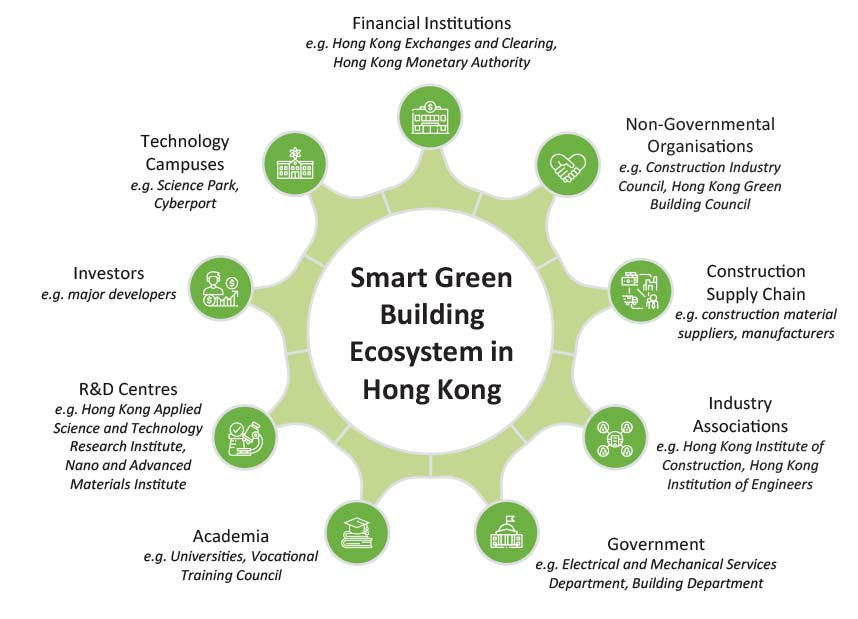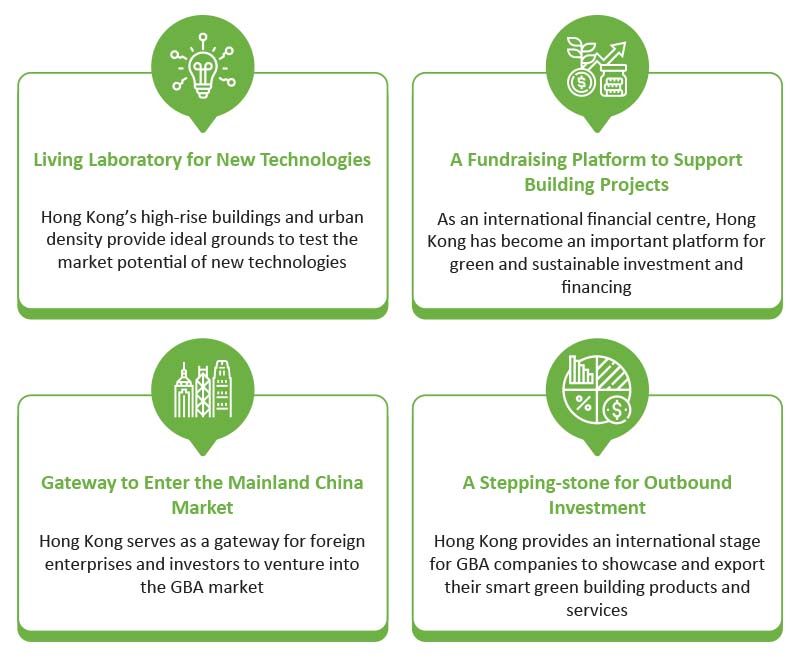Hong Kong is the next experimental hub for developing smart green buildings.
In the wake of climate change, reducing carbon emissions has become a top priority for nations and cities. The built environment, which contributes to almost 40 percent of energy related to carbon dioxide emissions, is anticipated to play a leading role in reducing carbon footprint. Being one of the most populated cities in the world with densely packed skyscrapers, Hong Kong is a great experimental hub for developing smart green buildings.
Key drivers of the smart green building trend
Climate change is a pressing issue and we are at a defining moment to take action. At least 85 percent of the global population has faced extreme weather events such as heat waves, tropical cyclones, and drought. On the other hand, 4.4 billion inhabitants live in cities, and the number of inhabitants is expected to rise to 80 percent by 2050 according to the World Bank. As the trend of urbanisation continues, the demand for buildings will continue to increase.
In 2020, construction activities have contributed to 37 percent of total energy-related carbon dioxide emissions. Therefore, the building sector must evolve and strive to minimise carbon emissions.

For many industries, digital technologies have transformed the way of doing business and created a new market landscape. The building sector has also joined the race of digital transformation and adopted technologies such as digital twins, smart building systems and AI-powered sensors to boost efficiency in every stage of a building lifecycle. In the long run, these investments may help to lower construction and maintenance costs, increase property value, and operating efficiency.
In addition, recent research has suggested that living or working in smart green buildings can improve one’s health and well-being. For example, indoor air quality sensors can monitor air condition in real time and adjust the building’s heating, ventilation, and air-conditioning systems. Thereby reducing the risk of respiratory illness and chronic conditions.
With these three key drivers, smart green buildings have been gaining traction worldwide and in Hong Kong.

The infographic above illustrates examples of smart green building technologies and features.
What makes Hong Kong such an attractive city to develop smart green buildings
At the heart of Hong Kong’s conducive business environment is a unique blend of core competencies that makes Hong Kong a prime location for global companies to launch their smart green building businesses.
1. Supportive Policies and Funding Schemes: The Hong Kong Government has been supportive in driving the use of smart technologies and green features in constructing its buildings. They have issued mandates, guidelines and incentives e.g. Building Information Modelling Mandate and Guidelines, Building Energy Regulations and Guidance, Green Item Subsidy to raise industry standards and drive up the market demand for energy efficiency solutions.
2. Mature Certification System: Hong Kong has established a leading environmental assessment tool for buildings since 1996, which assesses buildings from environmental, health and wellness, and digital aspects. Currently, more than 1,075 building projects have been certified with Building Environmental Assessment Method (BEAM) Plus, allowing property developers to show their commitment to sustainable development.
3. Premier Green Finance Hub: As a well-established financial hub, Hong Kong’s green and sustainable finance market is booming. Since 2021, HK$445 billion green and sustainable debt have been issued. The government has also provided support through offering green bonds and is issuing HK$176 billion green bonds up till 2026. These green bonds can help to finance or re-finance green projects including those related to smart green buildings.
4. World Class R&D Facilities: Hong Kong is equipped with superior technological infrastructure, including R&D centres and flagship technology campuses – Cyberport and Hong Kong Science and Technology Park. The two flagship technology campuses offer infrastructural facilities, incubation and acceleration programs to local and global start-ups that can help further the research and development process.
5. Advanced Technologies: The growing number of complex building projects have allowed the building sector to localise top notch technologies, such as virtual reality, augmented reality, MiC and IoT. Many developers have started to search for and apply such technologies to building projects in hopes to better manage their buildings.
6. Talented Professionals: Hong Kong has been grooming a wide array of talents including architects, R&D practitioners and engineers that are key to the building sector. The Hong Kong Government has also offered attractive schemes – Technology Talent Admission Scheme and Top Talent Pass Scheme to engage overseas and Mainland China talents to collaborate with businesses based in Hong Kong.
7. Vibrant Ecosystem: Hong Kong’s business landscape has allowed for ecosystem players such as financial institutions, NGOs, industry associations, investors and others to interact in a close-knit and dynamic atmosphere to generate ideas and successfully collaborate in smart green building activities.

Leveraging the advantages of Hong Kong
With the tremendous business opportunities brought by the rising trend of smart green buildings, Hong Kong shall utilise its advantages and become a platform for companies from overseas and Mainland China to collaborate and facilitate the development of sustainable technologies.

Riding on our traditional strengths in building construction and unique advantages in smart technologies and sustainability, Hong Kong is poised to lead the development of smart green buildings in the Asia-Pacific region.
For more information about the advantages of developing smart green building businesses in Hong Kong, kindly refer to the report co-developed by InvestHK and Arcadis ‘Discover new ideas and business opportunities in Hong Kong – The City of Smart Green Buildings’.





